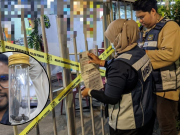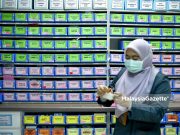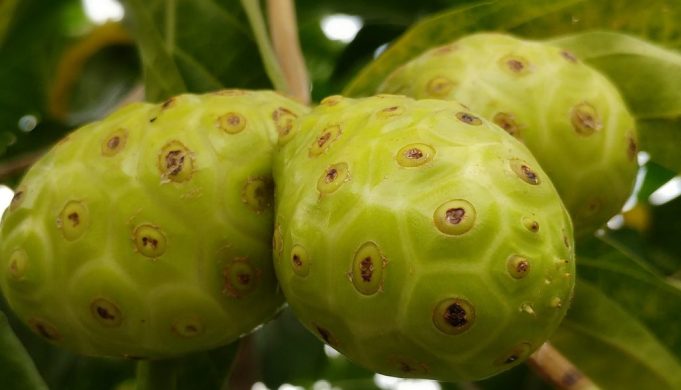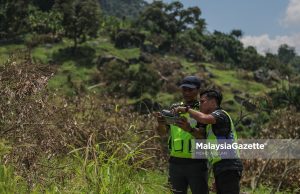The following article is submitted to the editorial of MalaysiaGazette by reader Assoc. Prof. Dr. Nurshamimi Nor Rashid.
Cancer might be the most fearful, dreaded and troublesome diseases. It is the second leading cause of death after cardiovascular diseases, worldwide. 70% of cancer deaths occur in low-to-middle income countries, and approximately 10 million people die from it in 2020, according to WHO. These number are truly astonishing and it could be due to the inequalities of cancer healthcare provided to the cancer patients. ‘Close the care gap’ is the theme to discuss the cancer healthcare inequalities for the World Cancer Day this year. Currently, people awareness regarding cancer is increasing and more cancer patients are looking for other alternatives to kill the cancer cells including the use of natural products. But, does natural products really work to cure cancer, or it is just a tell-tale? Firstly, let us take a look briefly at the meaning, types of cancer, the risk factors and, sign and symptoms of cancer.
Cancer is a disease caused when the cells divided is uncontrollable and they spread into other tissues. These abnormal cells growth is called tumor and it can be divided into three types; benign, malignant or precancerous. Benign tumors are rarely threatened life and not cancerous. They grow slowly and do not spread to other parts of the body. Malignant tumors are cells grow uncontrollably and they tend to spread to the neighboring cells via a process called metastasis. Lastly, precancerous or premalignant is a condition involving abnormal cells which are more likely to develop into cancer. Generally, there are five types of cancer. This first type is classified as carcinoma, which is a cancer that arises from epithelial cells. Another type of cancer is specified as sarcoma which is derived from bone or soft tissues such as fat, muscle and blood vessels. Lymphoma and myeloma are cancers that begin in the immune cells and this type of cancer can affect the cells’ ability to produce antibodies. Leukemia is also classified as one of the cancer types and it involves a cancer of the white blood cells and bone marrow. The last type of cancer is affecting the brain and spinal cord and is also known as central nervous system cancer. There are many factors and illnesses that can contribute to develop cancer. While there are a numbers of non-modifiable risk factors, there are also a few modifiable risk factors which can be prevented by reducing behavioral and dietary risks. Some examples of modifiable causes are alcohol, overweight or obese, physical activity and tobacco. Several examples of the non-modifiable risk factors include age, genetics and carcinogens.
Natural products have served us well to combat cancer for over 40 years and they have been the bedrock for drug discoveries ever since. It is estimated that more than half of anticancer drugs and antibiotics were originated from natural products. Nowadays, finding anticancer drugs from nature has been part and parcel in the cancer drug and discovery research. Researchers even built a man-made library of natural compounds, and chemically synthesized for anticancer agents. Malaysia also included in this effort to find natural anticancer agent using from our local plant extracts. In 2010, the Malaysian Ministry of Agriculture has launched the Entry Point Project 1 (EPP1) which focused on high-value local herbal products. Ten Malaysian plants have been categorized under the EPP1, which include ‘Tongkat Ali’, ‘Kacip Fatimah’, ‘Belalai Gajah’ and ‘Mengkudu’. Majority of the studies appear to be ‘isolated studies’ with lack of continuing development.
At the moment, we have been developing a lead from ‘mengkudu’ extracts to be used as an antiproliferative agent against colorectal cancer (CRC). Being the second most common cancer in Malaysia, the majority of CRC patients came forward for treatment at a late stage, usually with a poor prognosis. This obviously can increase the healthcare burden due to the higher cost of treatment. Most of CRC patients possessed a mutation of RAS family oncogenes, P13KCA and PTEN pathways. These groups of patients will not benefit from the anti-EGFR treatment. There are also a few drugs available for CRC treatment but with side-effects to patients. Therefore, a new safe and efficient compound development is still desired to overcome the problems arising from any treatments available for CRC at the moment.
We have been targeting the mutated KRAS and mutated p53 of CRC with the potential compound from ‘Mengkudu’ extract. So far, our data showed that one of the compounds from ‘Mengkudu’ extract is significantly suppressed both mutated KRAS and mutated p53 in the CRC cell lines. However, this compound is non-toxic towards the normal cells but highly selective against CRC cell lines. This indicate that the compound is highly potential to be developed as an antiproliferative agent against CRC, with the potential to reduce cells’ growth and yet safe for normal cells. This prove that Malaysia flora is highly valuable to be used in treating cancer.
Whether natural products can really reverse the cancer cells growth, this question is still yet to be answered, soon.
The author is an Associate Professor at the Department of Molecular Medicine, Faculty of Medicine, Universiti Malaya. She may be contacted at [email protected]

















